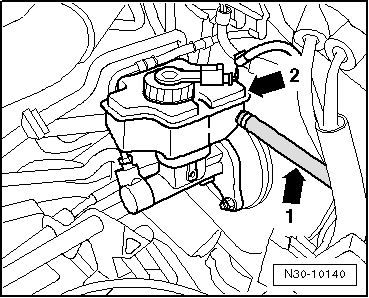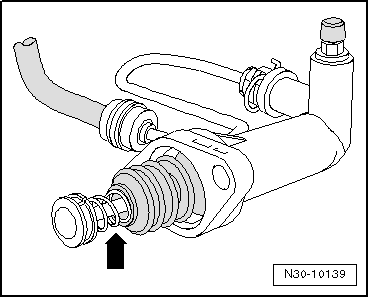| –
| First check brake fluid level in brake fluid reservoir. |

Note | t
| The clutch hydraulics are connected to one of the chambers -arrow 2- of the brake fluid reservoir via the supply hose -arrow 1-. |
| t
| If this chamber is empty or contains too little brake fluid, the system may be leaking. |
| t
| Supply hose between brake fluid reservoir and master cylinder |
| t
| Pipe/hose assembly between master cylinder and slave cylinder |
| t
| Connections (plug-in connectors and threaded connections), including hidden connections |

Note | t
| External leaks can be detected, for instance, by traces of brake fluid on or below the gearbox as well as on the noise insulation panel below the gearbox. |
| t
| Check correct routing of pipe/hose assembly between master cylinder and slave cylinder. The pipe/hose assembly must not be kinked or become trapped. |
| –
| Then depress clutch pedal carefully; hold pedal in five different positions for approx. 20 seconds at each position over its full travel. Have a second person check the components of the hydraulic clutch mechanism → Anchor for visible leaks. At the same time the first person should check whether the clutch pedal yields under the foot at any of the held positions. |
|
|

|
 Note
Note Note
Note

 Note
Note Note
Note
